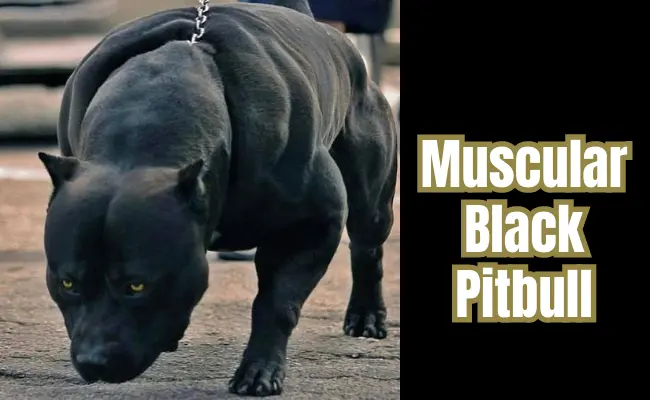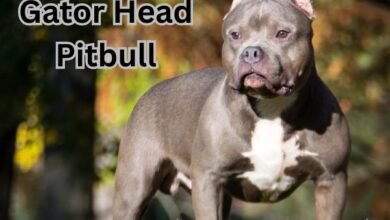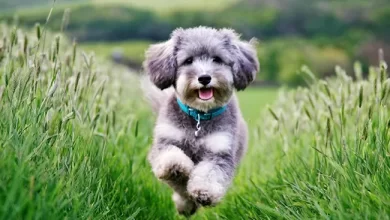
In the world of canine companions, few breeds possess the raw power and striking presence quite like the muscular black Pitbull. This remarkable breed, known for its impressive physical stature and unwavering loyalty, has captured the hearts of dog enthusiasts worldwide. With a sleek, ebony coat that accentuates its well-defined muscles, the muscular black Pitbull grabs attention wherever it goes. Their muscular build not only shows the beauty and physical capabilities of the breed but also reflects the capacity of the owner to maintain their overall health.
Building your Pitbull’s muscles is more than doing physical exercise alone. There are many ways you can approach this and introduce an effective workout and diet routine for your dog. Like with a lot of things in this world, it’s important not to overdo it. If you’re looking for a helpful guide in making your Pitbull more muscular, you’re on the right page. This article will make your mission a success story! In this article, we explore the fascinating characteristics and captivating allure of this remarkable breed, delving into their history, temperament, and the unique bond they form with their owners. Join us as we uncover the story behind the captivating muscular black Pitbull and provide you with valuable insights on how to build and maintain their impressive physique.
Why Are Pitbulls So Muscular?

Pitbulls have naturally muscular bodies, thanks to their lineage that includes bulldogs and terriers. These breeds are known for their solid and stocky build, which is passed down to Pitbulls. Among the Pitbull breeds, the American Pit Bull Terrier is especially known for its impressive muscles. When you look at them, you can see their strength and power in the well-defined muscles of their shoulder blades and forelegs.
Sadly, in the past, Pitbulls were used for cruel activities like dog fights and bull baiting. These practices took advantage of their athletic abilities and strength. Thankfully, such practices are now banned. Today, Pitbulls channel their sporting talents into activities like dock jumping and weight pulling, where their muscular bodies and agility shine. These activities provide a safe and controlled environment for Pitbulls to showcase their strength and athleticism. Pitbulls continue to impress with their natural muscular build, proving to be versatile and powerful companions.
Related Post: Muscular Pitbull
Pitbull Colors & Coat Patterns
The recognized kennel clubs, such as the American Kennel Club (AKC), Fédération Cynologique Internationale (FCI), and United Kennel Club, have established standards for the accepted colors and patterns of Pitbulls. Here are the main colors and patterns of Pitbulls:
- Black Pitbull
- Black Brindle Pitbull
- Red Pitbull
- Red Brindle Pitbull
- Blue Pitbull
- Blue Brindle Pitbull
- Blue Fawn Pitbull
- Blue Fawn Brindle Pitbull
- Fawn Pitbull
- Fawn Sable Pitbull
- Fawn Brindle Pitbull
- Tan Pitbull
- Buckskin Pitbull
- Seal Pitbull
- Reverse Brindle Pitbull
- Tricolor Pitbull
How to Make Your Pitbull More Muscular
As I promised, this guide provides you with effective techniques to help your Pitbull develop stronger muscles. It’s important to remember that each Pitbull is unique, especially when it comes to their anatomy, so exercise caution when implementing these methods.
Without further ado, here are five tried-and-true approaches to make your Pitbull more muscular:
#1. Provide your Pitbull with a proper diet and meal plan.
To begin building your dog’s muscles, it’s crucial to ensure they receive the right nutrients. Whether your Pitbull appears too skinny or overweight, the goal is to feed them food that promotes muscle development. While store-bought dog food can keep them full, it often lacks the necessary nutritional value. If you want to make your dog leaner or more muscular, introduce a well-balanced, muscle-building diet. This includes providing meals with essential proteins, carbohydrates, and fats in the right proportions.
Let’s take a closer look at how these essential nutrients contribute to muscle building in Pitbulls:
Protein: Make sure your dog’s diet includes a minimum of 40% protein. This compound not only helps in muscle development but also strengthens the immune system. Include high-protein foods like boiled chicken, pork, beef, or fish in every meal.
Carbohydrates: Carbs are a vital source of energy for your dog. Around 40% of their daily diet should consist of carbohydrates to support the growth of brain and body cells. Incorporate carb-rich foods such as brown rice, whole wheat, corn, and potatoes.
Fat: Allocate about 20% of your dog’s meal plan to healthy fats. Fats provide fuel for the muscles and ensure they have enough energy for performance. Raw eggs are a great source of fat that can be included in each meal.
To encourage an anabolic muscle-building state, consider a meal plan with six small meals throughout the day. Maintain a consistent feeding routine to help your Pitbull reach their muscle-building goals.
#2. Make exercise a part of your dog’s routine.
While a proper diet is essential, exercise plays a vital role in building muscle for your Pitbull. Start with simple activities like regular walks and runs.
Once your dog gets used to these routines, you can introduce additional exercises such as weight pulling, playing with spring poles, or running uphill. For maximum muscle workout, consider incorporating weight sleds or weight vests. However, it’s important to ensure your dog enjoys these activities to prevent boredom.
During exercise, your dog’s muscles undergo small tears. Don’t worry; this is a natural process that allows for muscle repair and growth. That’s why it’s crucial to establish the diet plan before engaging in intense workouts. By combining the right diet and exercise, you’ll help your Pitbull achieve impressive muscle gains.
#3. Ramp up the intensity with high-intensity cardio training.
Once you start witnessing the benefits of your regular exercise routine, it’s time to take it to the next level with some heart-pumping cardio.
Keep these high-intensity cardio sessions short, around 10 to 15 minutes per day, as they require greater effort. Engage your Pitbull in activities like sprinting or running up bleachers or hills.
With approval from your vet, you can also consider incorporating a weight vest to intensify the workout. However, it’s important to respect your dog’s limits and avoid pushing them too hard, as their well-being should always take precedence.
#4. Provide your Pitbull with dietary supplements
Your Pitbull may experience nutrient loss or lower levels of essential body nutrients due to the intense exercise and muscle workouts they undergo.
In addition to feeding them the recommended amount of food, it’s beneficial to include dietary supplements in their daily meals. Vitamin supplements, proteins, omega fatty acids, and antioxidants aid in muscle repair and growth. Specifically, omega fatty acids help reduce muscle pain and swelling, ensuring your dog remains active.
Keep in mind that these supplements only assist and support muscle growth; they do not guarantee it.
#5. Preventing Parasitic Infection
It’s important to protect your Pitbull from parasitic infections, such as roundworms and hookworms, which can easily enter their system.
These parasites do not get absorbed by your dog’s body; instead, they feed on the nutrients and minerals obtained from their food. This can result in weight loss and other complications for your pet.
Furthermore, if you have other dogs at home, they may also become infected with these parasites. It is crucial to promptly seek the appropriate treatment from your veterinarian at the first sign of symptoms.
Are Black Pitbulls Naturally Muscular?

Black Pitbulls, like Pitbulls of other coat colors, can naturally have a muscular build. The muscular appearance of Pitbulls is a result of their genetic makeup and their breed’s history as working and athletic dogs. Pitbulls are known for their strength, agility, and muscular physique, which is attributed to their genetics and their purpose as working dogs in activities such as bull-baiting and later as farm and guard dogs.
However, it’s important to note that not all Black Pitbulls will automatically have a muscular build. The degree of muscularity can vary among individual dogs and can also be influenced by factors such as genetics, diet, exercise, and overall health. Proper nutrition, regular exercise, and responsible breeding practices can contribute to maintaining a healthy and well-developed musculature in Black Pitbulls, as with any other Pitbull of a different color.
In conclusion, the muscular build of Black Pitbulls is a characteristic that can naturally be observed in many individuals of this breed. Their genetics and historical background as working dogs contribute to their strong and robust physique. However, it’s important to remember that not all Black Pitbulls will possess the same level of muscularity. Factors such as genetics, diet, exercise, and overall health play a significant role in determining the degree of musculature in these dogs. Responsible breeding practices, proper nutrition, and regular exercise are essential for maintaining a healthy and well-developed musculature in Black Pitbulls, as with any other Pitbull regardless of their coat color.



